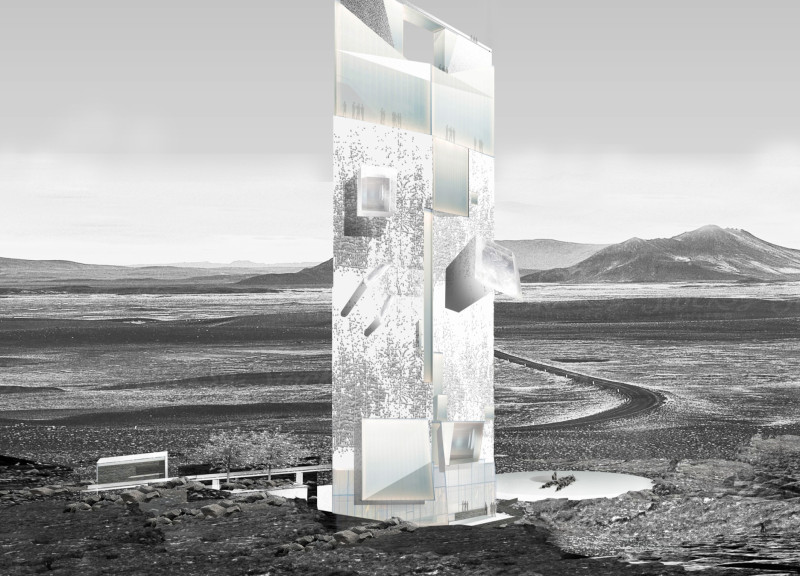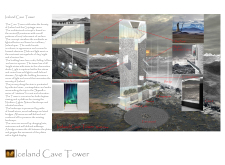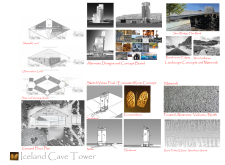5 key facts about this project
The Iceland Cave Tower features a modern design that aligns with the distinctive landscape of Iceland, particularly the Grjotagja caves. This structure serves multiple functions, including spaces for a café, lobby, and offices. It aims to enhance the experience for visitors and locals. The design draws inspiration from ancient Runestones, reflecting cultural heritage in contemporary architectural form.
Facade Design
The building displays two unique facades that highlight the contrasts in the region. The south facade is characterized by its light, reflective quality, reminiscent of iceflows and Iceland spar. This design creates a visual connection with the environment. In contrast, the north facade presents a volcanic look that relates to the area’s geological features. This dual approach not only contributes to the building's appearance but also symbolizes the relationship between day and night along the east-west axis.
Interior Experience
Central to the building is a full-height atrium that plays a critical role in its layout. This space allows for vertical movement and provides access to observation decks. The atrium captures natural light, transitioning from soft illumination to stronger beams throughout the day. This design choice fosters a connection between the occupants and the natural surroundings, enhancing the overall atmosphere.
Visitor Interaction
The journey within the building is designed for engagement and learning. A staircase leads to the Skywalk, with carefully positioned viewing stations that invite visitors to pause and reflect on the landscape. Opportunities to observe the Northern Lights deepen the connection between people and the environment, creating a memorable experience.
Ecological Integration
The surrounding landscape is carefully maintained, featuring paths made from basalt stone, wood, and steel. These walkways are designed to limit disruption to the ecosystem while allowing exploration of the natural features. Additionally, a bridge crosses the rift between tectonic plates and includes a display that tracks geological movement. This element further connects the structure to its environment, prompting interest in the Earth's natural processes.
The design culminates in an architecture that reflects cultural significance and ecological sensitivity. The atrium stands as a focal point, inviting natural light and linking the interior experience to the expansive landscape of Iceland.






















































